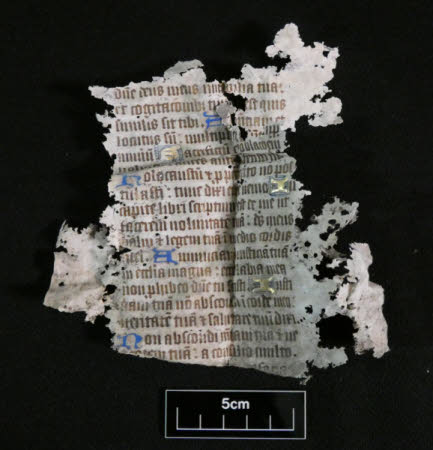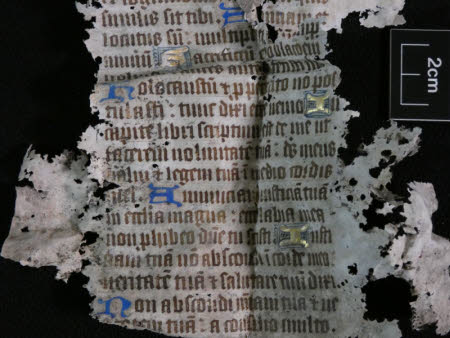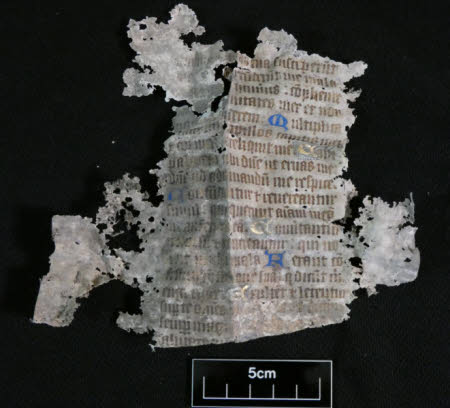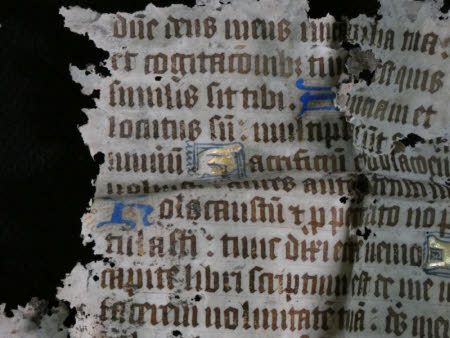Manuscript leaf from a fifteenth-century Psalter or Book of Hours, with text from the Vulgate, Psalms 39.
Category
Manuscripts and documents
Date
c. 1400 - c. 1450
Materials
Parchment
Place of origin
Netherlands
Order this imageCollection
Oxburgh Hall, Norfolk
NT 3065999
Summary
Full description
This leaf, written in 20 lines per page, ruled with graphite on a good quality calf parchment, had been cut from a bound volume, which was clearly a book of some quality with wide margins. The leaf was folded in half vertically with the outer half of the verso encrusted with dirt from the debris in which it was found in a void in one of Oxburgh’s attics. The place of production is likely to be the S Netherlands (or possibly N France), during the 15th century. The text is clearly identifiable as being from Vulgate Psalm 39 ("Expectans expectaui"). This text was used as part of the Office of the Dead, specifically the Third Nocturne on Wednesdays and Saturdays. It is likely to be a page from a psalter as there are no highlighted rubrics of the sort found in books of hours or liturgical manuscripts. The blue pigment is probably azurite, the most common blue pigment used for decoration. The gold is gold leaf, which has been laid on in layers and then burnished. The ink is iron gall ink, with finely-ruled lines. There is a little human-headed penwork elaboration to the 'h' of ‘holocaustum’, indicating a hierarchy of illumination which may have included further embellishment such as illuminated major initials. Why this leaf was detached from the rest of the book and found in rubble in the eaves remains a mystery, but may be linked to the continuance of the Catholic faith by the Bedingfeld family after the Reformation.
Bibliographic description
[1] leaf ; 8 x 13 cm. Imperfect: significant creasing and margins heavily eroded by insect damage. Provenance: Discovered in an attic eaves void during archaeological investigations, May 2020. Binding: not bound.
Provenance
Discovered on 27th May 2020 during the Raise the Roof project in an attic eaves void in the room known as the Wallpaper Attic.



